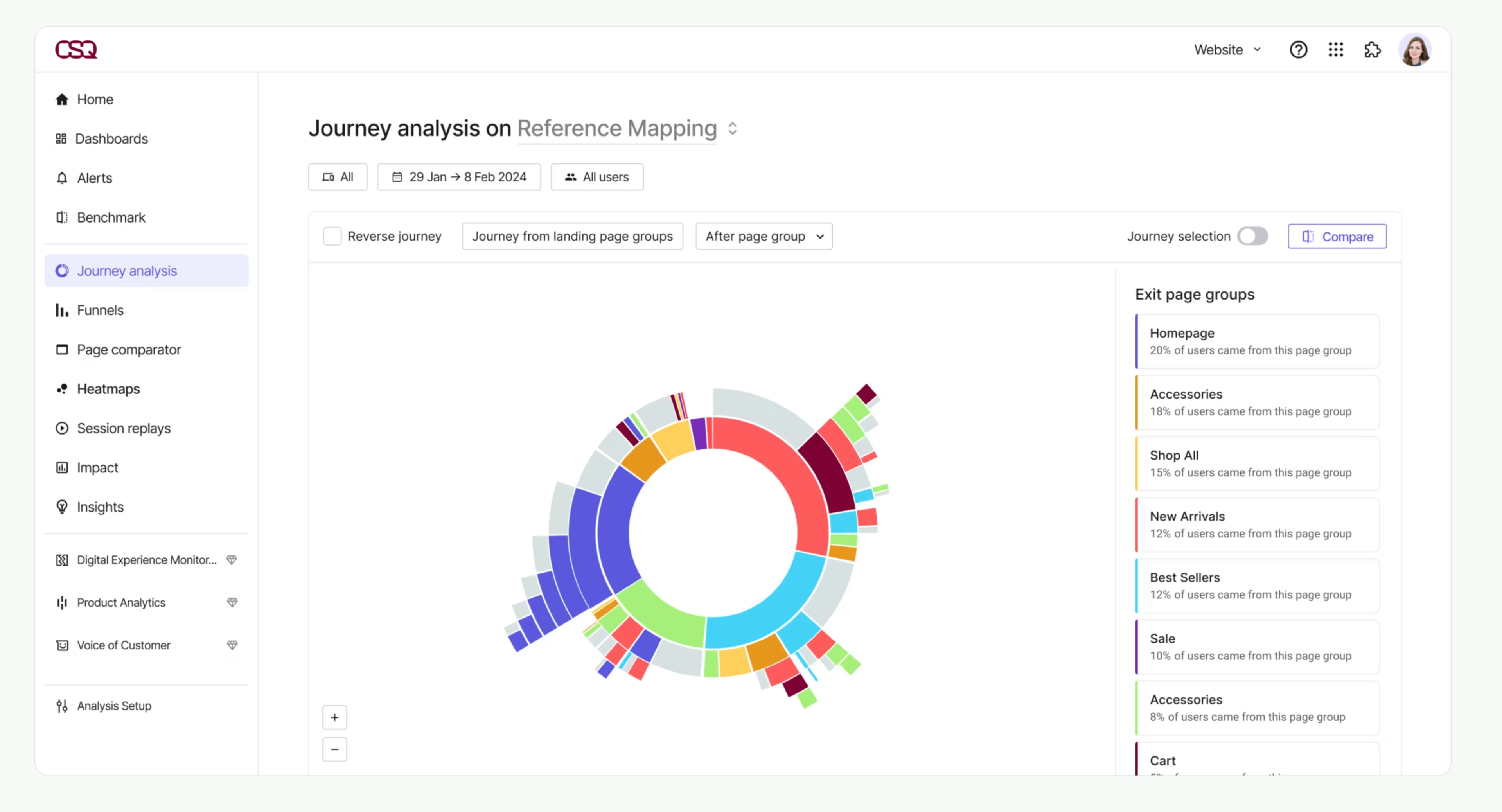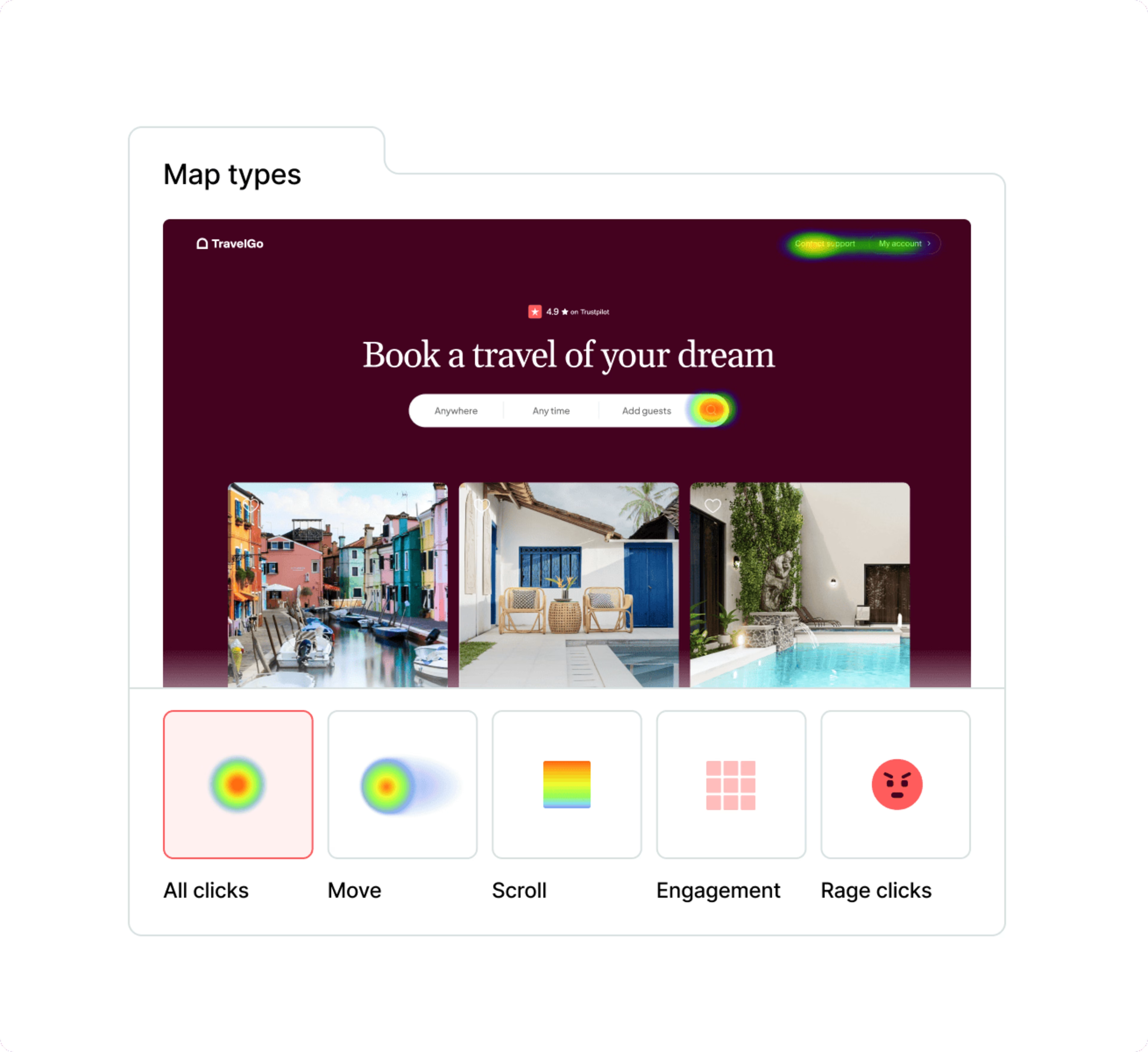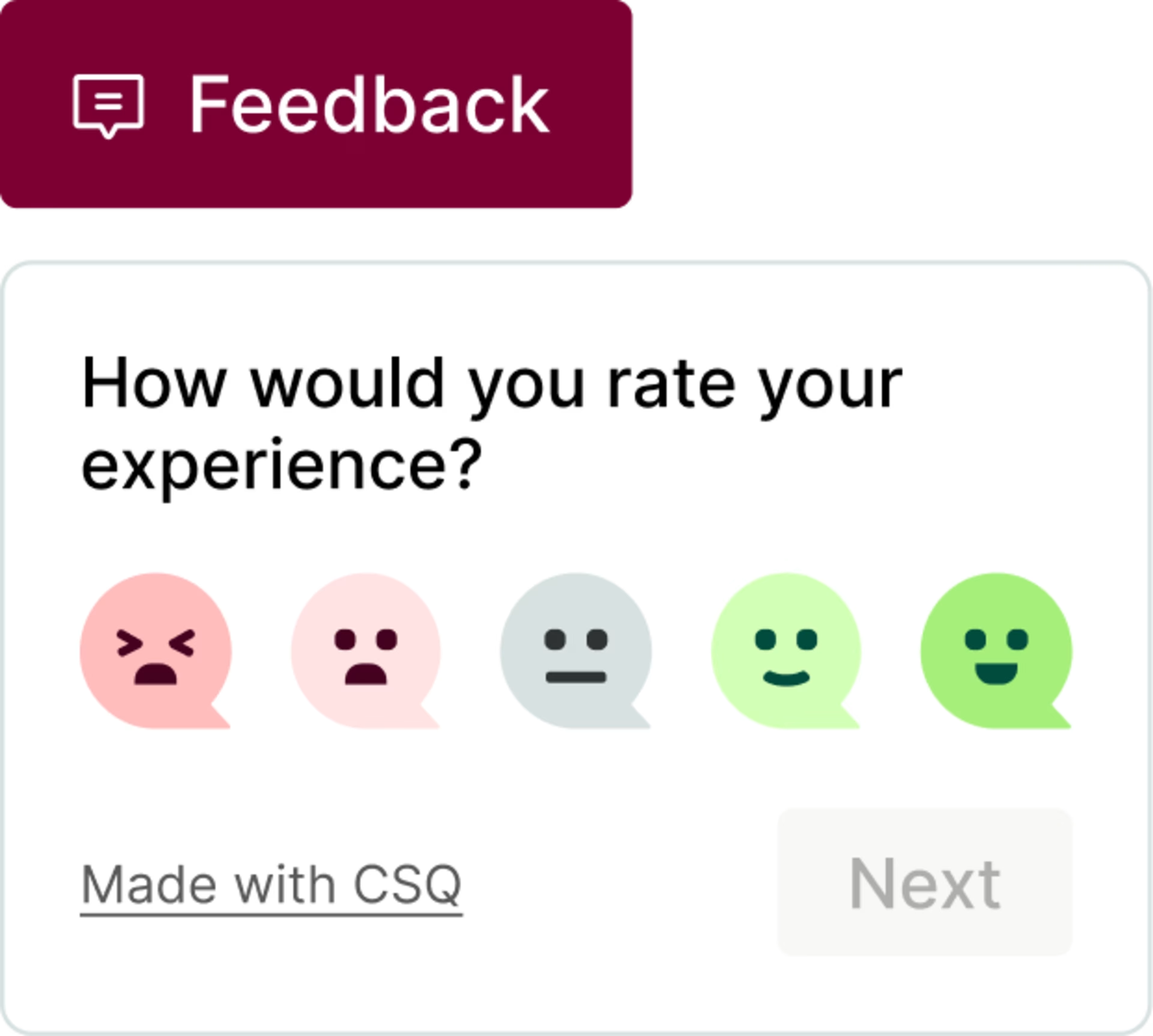Website analysis is the key to serving users better and unlocking new revenue, helping you ensure people—and search engines—find it appealing. But when there are seemingly limitless ways you could modify your site, how do you identify and prioritize the most impactful changes?
Depending on your business, your website functions as a salesperson, product showroom, content library—or all of the above. With so many hats to wear, your site has a massive impact on how users view your business. And it ultimately dictates how much they spend with you.
There are thousands—if not millions—of websites like yours: that’s why analyzing your website regularly is crucial to stay ahead of the competition.
This guide gives you an actionable, step-by-step process for analyzing (and improving) your website to keep it functioning at optimal performance. With the insights shared here, you’ll uncover the greatest opportunities for improvement.
How to conduct a user-driven website analysis
If you do some quick research, you’ll notice the standard website analysis process mostly focuses on search engine optimization (SEO) and surface-level metrics, such as
Page loading speed
Traffic source
Bounce rate
These essential web analytics metrics affect your user experience (UX) and search engine rankings. However, this kind of data only gives you a partial picture of what’s happening.
For example, your bounce rate might tell you visitors are leaving a certain page, but it won’t tell you why. And most importantly, it won’t tell you what to do to improve the page and keep users sticking around.
That’s why we recommend a user-driven approach to website analysis—one that reveals how users think, feel, and act on your site.
![[Visual] Traditional-vs-user-driven-website-analysis](http://images.ctfassets.net/gwbpo1m641r7/29yPyep09mVwZDnr7Lx8lx/2e44238f4abfb4301b92cdf457b0cb9d/Traditional-vs-user-driven-website-analysis.png?w=1920&q=100&fit=fill&fm=avif)
Traditional vs. user-driven website analysis in a nutshell
Follow these 9 steps to gauge how your website is performing in terms of SEO, user sentiment, and competitive positioning—then make the changes that matter.
1. Inspect your technical and SEO fundamentals
Your user journeys begin when potential customers find your website, so the first step is to ensure it’s set up to satisfy search engines. Here's how
Run an SEO audit: look for technical issues affecting your organic search rankings, like missing title tags, improper redirections, or broken links. You can run technical audits with SEO platforms like Semrush, Moz, and Ahrefs, but it may be a good idea to get guidance from an expert when resolving these issues.
Assess how your website ranks on search engines: online, your sales opportunities are only as good as your website traffic. Use SEO analysis tools and Google Search Console to check how you rank for important search terms in relevant locations.
Measure your page loading speed: slow websites are a drag for your customers and a red flag for search engines—so if your site’s a slow loader, you might end up further down the search engine rankings. Fortunately, Contentsquare helps you monitor Core Web Vitals so you can quickly take action to improve speed, minimize errors, and build a better digital experience.
![[Visual] photography-man-computer-speed-analysis](http://images.ctfassets.net/gwbpo1m641r7/2LCBFOdZno86NSKBHaEoYl/eb7c899068a175825de69b5c2b1440d3/photography-man-computer-speed-analysis.png?w=1920&q=100&fit=fill&fm=avif)
Contentsquare Speed Testing & Monitoring keeps an eye on your Core Web Vitals and other key performance metrics
You can also check your website authority score in the SEO platforms mentioned above. If it’s much lower than your competitors’ scores, it could be time to step up your content marketing and SEO game.
✅ For more resources on analyzing your technical and SEO fundamentals, see our website analysis checklist.
2. Analyze your site’s performance across devices and browsers
Poor responsiveness across devices often goes unnoticed, so it’s important to check that your site displays correctly for all users. Here's how
Compare performance metrics for desktop vs. mobile: there'll always be some variance in how users behave on mobile vs. desktop. But if your bounce rates are more than 8% higher on mobile, or if you’re seeing a conversion rate difference of more than 2-3%, your site might not be responsive.
Find performance differences across browsers: if your site doesn’t display well on older versions of web browsers, it could worsen your users’ browsing experience. Use your web analytics platform to compare conversion rates from different browsers.
Carry out usability testing on your mobile site: small issues with your mobile experience aren’t always obvious. If you observe significant differences between your mobile and desktop conversions, carry out usability testing to find out how users experience your mobile site.
🔥 If using Contentsquare
Session Replay lets you watch users’ journeys on your site as if you were sitting in the room with them. Filter your replays from your dashboard to bring up mobile journeys only and see how these users are behaving.
![[Visual] Session Replay - mobile](http://images.ctfassets.net/gwbpo1m641r7/47xsbh2aTiejoHIcdus7iF/d4e6e2d41eee43b6b7ff4e72989f170f/Screenshot_2024-11-04_at_19.34.54.png?w=3840&q=100&fit=fill&fm=avif)
An example of a Contentsquare user’s mobile replay
3. Get reacquainted with your target market
Your users are unique, and so is the way you serve them. So when you want to know how well your website does its job, start by understanding the people visiting it on a deeper level. Here's how
Create profiles of your target audience: with research-driven user personas, you keep their needs, motivations, and pain points in mind throughout your analysis
Map out the journey for each key user persona: customer journey mapping gives you a framework to understand what your users need from each page they navigate to
Start segmenting your website visitors: use surveys to identify key audience segments by asking visitors their job title, industry, or other demographic questions. Then, combine these insights with website tracking data to learn more about your audience segments.
💡Pro tip: use Contentsquare Surveys to create automated flows of open- and closed-ended, and multiple-choice questions. For example, first ask visitors a multiple-choice question to segment them, then follow up with open-ended questions to learn more.
![[Visual] User persona survey](http://images.ctfassets.net/gwbpo1m641r7/O1EiK45mq6WkEyl4EZ8xG/76dca8ddf84413ba0d7c4926c2db864b/Screenshot_2025-01-02_at_10.25.28.png?w=1920&q=100&fit=fill&fm=avif)
Use a Contentsquare user persona survey to segment your website visitors
4. Run a competitor analysis
Customers always want the best products, most efficient service, and easiest website experience. Regularly scope out the competition to see how your website compares in key areas—even if you’ve already got loyal users. Here's how
Analyze product/service offerings: what are your competitors selling, and how does it stack up against your offer? Are they offering a delivery method your users might appreciate, like gift cards or a unique subscription model?
Compare website messaging: how are your competitors addressing user desires and pain points? What (relevant) messages and guidance do they provide that you don’t?
Check backlinks: who’s linking to your competitors? Use SEO tools to find out. See what strategies your competitors use to get links, so you can replicate them and bring new traffic to your site.
❗️A quick caveat on competitor analysis
Looking at your competitors’ sites brings valuable inspiration and helps you get a sense of current best practices.
However, don’t assume that just because a competitor has done something differently, the decision is paying off—or that it'll work for your customers. Product teams do get things wrong, and only data (like conversion metrics and customer feedback) can tell you what’s really working.
5. Understand how customers move through your site
To analyze how well your website is serving users, it’s helpful to understand the common journeys they take through it.
Traditional analytics tools like Google Analytics help you look at these journeys in terms of hard numbers, but Contentsquare’s Journeys capability helps you actually see how users progress through your site, page by page, from entry to exit and discover your biggest opportunities and frustrations within minutes.

A Contentsquare Customer Journey Analysis report showing common user journeys
What you’ll learn from analyzing the user journey
See how journeys from key segments differ
You can also segment your data in Contentsquare to narrow your focus for different groups—like website traffic coming from paid ads, or visitors from Germany.
Keep in mind that different traffic sources often correspond with different stages of the buying journey. For example, users who visit blogs are often purely seeking information. But users who click on a promotional email may be ready to buy.
Looking for trends in their behavior can help you optimize the site for their journeys. For example
Users who come from email tend to visit your support pages: this could suggest they’re ready to buy your products, but they’re having a problem—like a coupon code that isn’t working
Users who go directly to your homepage often navigate to a specific product: if the market is highly aware of one of your products, streamline the journey by linking to it directly from your homepage
🔥 If using Contentsquare
Want to view session replays or survey answers from users who entered via a specific page on your site? Shortcut straight to Session Replay to find data from the pages you’re interested in.
![[Visual] Journeys - Segments break down](http://images.ctfassets.net/gwbpo1m641r7/2guzw3fXWpbbHWqIpDXxiG/8e828c61f89acda10e42fdb7ad72c597/Screenshot_2024-11-04_at_19.26.32.png?w=3840&q=100&fit=fill&fm=avif)
Contentsquare lets you segment journeys by channel, campaign, or persona based on actual behaviors
Find out what content captures users’ attention
What pages do key segments commonly navigate to on their journeys? As well as helping you determine your most popular products, this insight can lead to impactful site improvements. For example
Capitalize on the blog content users love: identifying your most popular content shows you what your users are interested in and may want to read more about. And if users tend to go further down your sales funnel after reading a specific piece of content, signposting that page across your site could win you more business.
Identify which informational pages help users convert: you might notice visitors who buy clothing products often navigate to a page with size charts first on your ecommerce store. With this insight, you streamline their buying journey by modifying your product pages to include the size charts.
💡Pro tip: use Contentsquare Heatmaps to see how far down your page users scroll. If readers aren’t finding key information they need to make a buying decision, consider moving it to a more prominent location.

Depending on the type, heatmaps show you where users scrolled, clicked, or moved their cursor to
Find out where users drop off
User journeys should naturally conclude on certain pages, such as your Contact Us page. But if your journey analysis reveals that users commonly drop off in places you don’t want them to, it’s worth taking a closer look.
Note down any pages with a noticeably high drop-off rate—we’ll look at them more closely in the next step.
6. Observe user needs and perspectives on key pages
Now, it’s time to use behavior analytics tools and platforms (like Contentsquare 👋) to better understand user sentiment on the pages you identified in the previous step.
On pages where users commonly drop off, you’ll want to learn their motivations and doubts. And on pages users frequently navigate to, you’ll need to know what they’re interested in and what they want next.
It’s also a good idea to look at user behavior and needs on pages you simply know to be important, such as your homepage. For example, do users typically navigate using your dropdown menus or your search bar?
Let's take a look at how to understand what motivates and discourages users on your site.
Ask visitors what they need
Analytics data gives you clues about what users need—but often, the best way to learn is by simply asking them.
Use on-site surveys to ask more insightful questions, like
What could we do to improve this page?
What kind of content would you like to see from us next?
Will you make a purchase today? (If the visitor clicks ‘no’, use follow-up questions to ask why)
✅ You'll find more example questions in our website analysis checklist.
Discover what grabs the attention of different segments
In an earlier step, you identified the most common journeys different audience segments take through your site. Behavior analysis tools help you expand on these insights by answering questions about your users’ motivations on key pages. For example
What interests first-time visitors most on your homepage?
Which support links do trial users of your app click on?
Which menu items do users from a specific industry navigate to?
One of the best ways to gather these insights is with heatmaps. By using a heatmap tool with advanced data filters, you can visualize where different segments click and scroll to on key pages.
![[Visual] Heatmaps types](http://images.ctfassets.net/gwbpo1m641r7/44qPX6Nyu2v2i9pGM8JdIE/e1ccfd573959295483bb4b867ca7e57f/Heatmaps___Engagements__3_.png?w=2048&q=100&fit=fill&fm=avif)
Example of a Contentsquare zoning heatmap
Boosting conversions: Leeds Building Society + Contentsquare
Leeds Building Society (LBS) is a major financial services provider in the UK. Its Head of Digital noticed that their conversion rates on key savings pages were lower than expected. To uncover why, his team analyzed user behavior using Contentsquare.
Through Journeys, Keith saw that users were frequently moving between product pages and the homepage, looping without taking action. This indicated that users were struggling to compare savings products and find the information they needed.
Keith’s team hypothesized that these users were attempting to compare products but were confused by the layout of the site and the heavy legal content on the pages. They focused on users coming from comparison sites, noting that many dropped off after viewing a product page.
Using Zone-based Heatmaps and the Exposure Time metric, they discovered that users were spending too much time on long, text-heavy product pages. The legal information was overwhelming, causing frustration.
Keith’s team redesigned the product pages to simplify the content and introduced a comparison tool that allowed users to easily compare products. The result was a significant success, with a 40% increase in average conversions on the product pages, and some pages saw as much as an 80% boost.
Read the full Leeds Building Society case study here
“I use heatmaps—specifically click maps—to discover one of the most common conversion issues on websites: the element visibility issue. This is when an element that’s important in the user's decision-making process is not seen, either because people don't scroll on a page or because it's hidden under a slider, a dropdown, or a tab. These are often some of the easiest and cheapest changes you can make, because they don't require additional copy or design changes but simply moving elements around to make them more visible.”
Get quantitative data on user sentiment
To understand users’ perspectives, you ideally want to gather both qualitative and quantitative data about their experiences.
While open-ended questions let you explore individual users’ perspectives, feedback widgets help you quantify how entire audience segments feel.

An example of a Contentsquare Feedback widget
This is helpful in 2 ways
See how sentiment changes across the customer journey: let’s imagine most visitors travel through 5 key pages before exiting. With aggregated feedback scores, you find that most pages are rated 4.5 on average—but on a page where users are dropping, the average score is just 3.
Track how effective your optimization efforts are: after making a key change to your content, did the improvements actually work? Check whether your average user sentiment has changed to find out if your content is still what’s holding users back.
🔥 If using Contentsquare
Contentsquare gives you access to the Retention Analysis capability so you can get a clear visualization of how data changes over time. With a complete analysis of journeys covering all devices and sessions in between, you’ll be able to identify events at each step and opportunities for personalizing experiences.
Retention analysis lets you accurately attribute conversions across different touchpoints to understand what has the greatest impact
7. Get to the bottom of why visitors are leaving
When users are dropping off conversion-focused web pages (like your checkout), it often represents a deeper problem. Here's how to understand why visitors are failing to convert on important pages:
Find the most problematic pages: do any of your pages have significantly higher bounce or exit rates than others? Are there differences in how much your audience segments leave from specific pages?
Use exit-intent surveys to find out why users are leaving: exit-intent surveys appear when the user looks like they’re closing the page or tab—the perfect moment to get helpful feedback from them
Watch replays to see how users behave on those pages: replay the users’ journeys to see what they did just before leaving. Were they encountering bugs, showing signs of confusion, or getting distracted by something?
💡Pro-tip: find drop-off points faster with funnel analysis.
Funnel Analysis lets you visualize your entire funnel at a glance. Use it to see where users are dropping off, then click to view replays of their journeys.
Contentsquare helps you investigate the drop-offs and visualize your users struggles by jumping directly into their session replays
8. Ask for feedback from users who converted
It's a plausible assumption that users who converted were satisfied with their website experience—and there’s still plenty you can learn from them. Luckily, a user who’s had an overall positive experience on your site is often more inclined to answer your questions.
Use surveys to ask key questions like
What almost stopped you from buying from us today?
What was your biggest challenge, frustration, or problem with finding us online?
What other providers did you look at when researching this purchase?
On a scale of 1–10, how likely are you to recommend us to a friend?
![[Visual] Two-question NPS survey](http://images.ctfassets.net/gwbpo1m641r7/5JUtO9AVt2X0pC5PsNqFLc/3b72841e83db83ffab5add27a16497fc/ASK-VOC-NPS-Capability-Hero-1.webp?w=3840&q=100&fit=fill&fm=avif)
An example of a Net Promoter® Score (NPS®) survey with a follow-up question
💡Pro tip: asking how likely customers are to recommend you gives you your Net Promoter® Score (NPS®) —a widely used method for gauging customer satisfaction. Use our ready-made templates to set up NPS surveys quickly in Contentsquare.
9. Prioritize next steps in a final analysis
By the end of this process, you should have an idea of
Whether you have any major technical and SEO issues
How you stack up against competitor websites
What users care about on your strongest (and weakest) web pages
Which user needs you could serve better to stop visitors from leaving
Use these insights to compile a list of potential improvements you could make to your website. Next, put them in order using prioritization frameworks, like the RICE method, to determine what changes you should work on next.
A successful website analysis starts with the right data
The more your business relies on your website to generate revenue, the more important it is to carry out regular analyses. After all, your customers’ needs continue to evolve and change—and so do the companies you’re competing with.
But if you want to get the edge on your competition, you can’t rely solely on best practices or industry trends. The answers to your most difficult questions will come from the people that matter most: your users. By gathering data on their needs and experiences, you get right to the bottom of what’s happening on your website.
